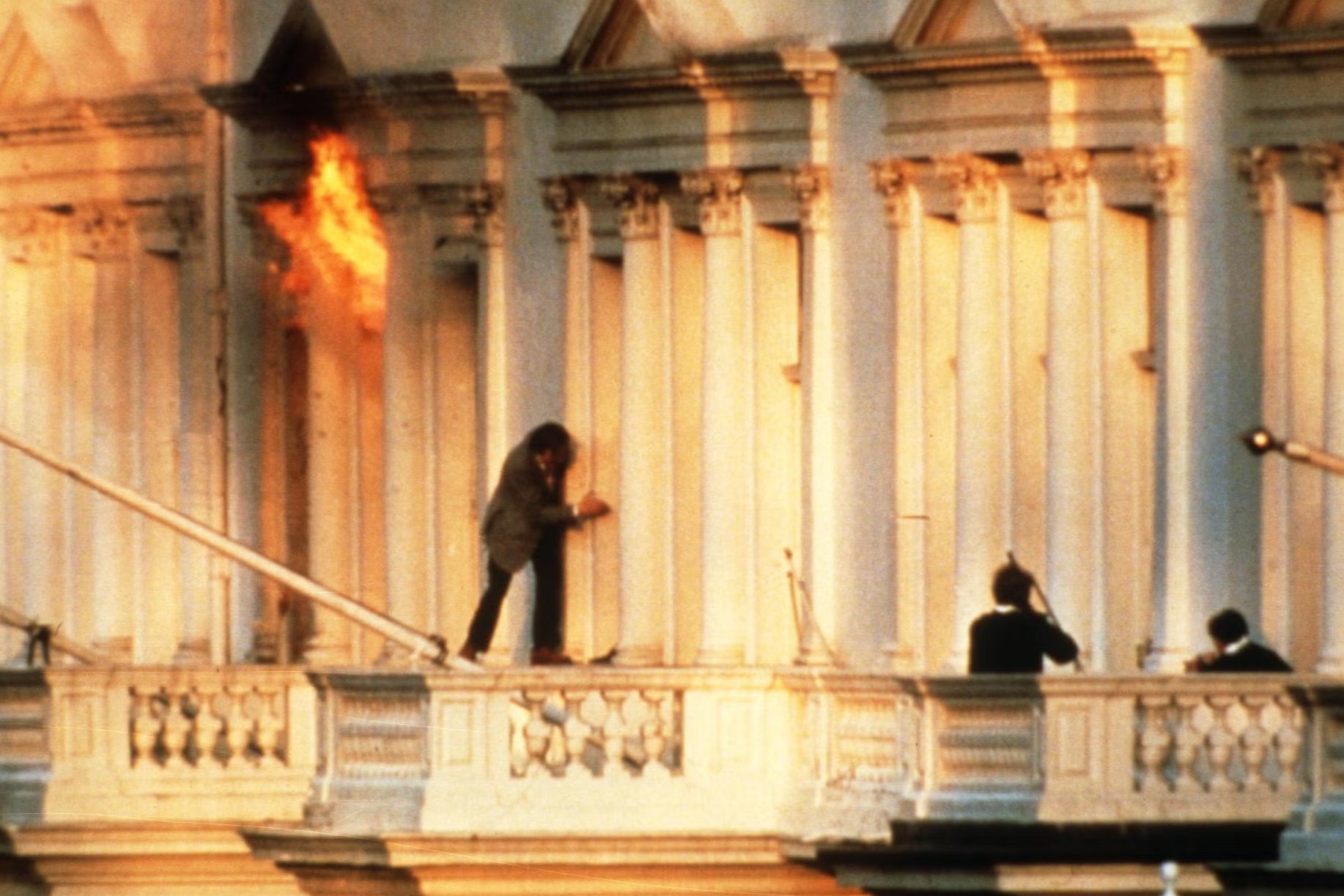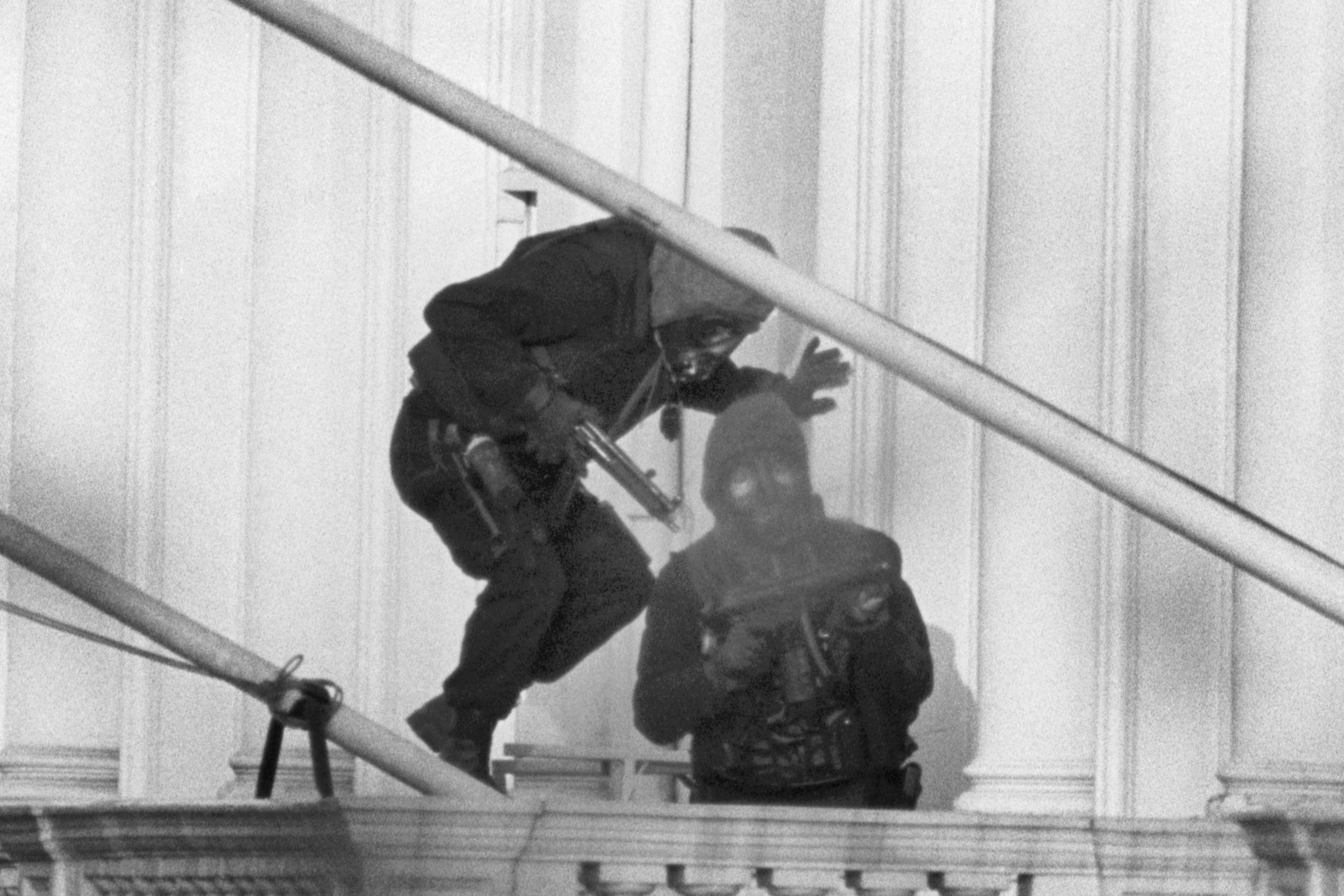Ben Macintyre’s The Siege: A tale of an SAS assault that lasted ‘the time it takes to cook a hard-boiled egg’
An accomplished chronicler of the dark side of matters of the state, Macintyre surpasses himself with a new unputdownable book retelling the siege of the Iranian embassy, writes Robert McCrum


Inevitably, it was Winston Churchill who captured the thrill of Britain’s secret state. “In the higher ranges of Secret Service work,” he once wrote, “the actual facts were in every respect equal to the most fantastic inventions of romance and melodrama. Tangle within tangle, plot and counter-plot, ruse and treachery, cross and double-cross, true agent, false agent, double agent, gold and steel, the bomb, the dagger and the firing party, were interwoven in many a texture so intricate as to be incredible and yet true.”
Those splendid words could stand as an epigraph to Ben Macintyre’s bestselling oeuvres. From Operation Mincemeat to Colditz to Rogue Heroes, a history of the SAS, Macintyre has not merely burnished the glamour of Churchill’s description. From many points of view, Macintyre has given a joyous new lease of life to the romance of the dark side in matters of state.
British readers – and anglophiles worldwide – long for the kind of history that’s entertaining, slightly mad, and unputdownable, populated by charming, square-jawed protagonists who are not quite what they seem. With this audience, you can bet the farm on a ripping post-imperial yarn. But here’s the delightful thing about history: it has its own inscrutable logic.
Who, for instance, would have guessed that a dreary May bank holiday would witness a special forces action that would shock the world and give a sinister new meaning to “Who Dares Wins”? In brief, when the SAS executed an operation that fell far short of Churchill’s “inventions of romance and melodrama”, they were not a quarter of a mile from Harvey Nichols.
Cast your mind back to the dismal inertia of that bank holiday in London in 1980. Shops closed; money (pre-ATMs) scarce; entertainment limited. Mrs Thatcher had just come to power, and television was in the grip of snooker. But this mood of same-old same-old was broken with the news of the Iranian embassy siege – six idealistic young Arabs with submachine guns, backed by Saddam Hussein, seizing 26 hostages at 11am on 30 April to promote the cause of self-government for the oil-rich province of Khuzestan.

For a twentysomething loafing in an Earl’s Court bedsit, this presented an antidote to a boring weekend, so my instinct was to go and see what was going on. However, at Queen’s Gate, I soon discovered that police cordons had sealed off the crime scene. Whatever happened within that perimeter would be a matter for the SAS, the prime minister, and Britain’s secret state.
The world seemed younger then, and older. Many of the ministers in Thatcher’s cabinet had served in the Second World War. Her home secretary, Willie Whitelaw, had a distinguished military record; his contribution to what followed would be decisive. The tumultuous six days (plus 15 hours and 30 minutes) that ensued, the subject of Macintyre’s brilliant reconstruction today, formed an event that lingers brightly in my memory. It is also one that, thanks to television, became part of our national myth.
The tale of plucky PC Trevor Lock, the London bobby caught on the hop by the terrorists, was tabloid gold, his stoic heroism evocative of a resilient Blighty. Macintyre argues that Britain, in the aftermath of a thriller poised on a knife edge, was a different place.
Looking back in detached, at times ironical, curiosity, while shunning the murky glamour of special ops, he anatomises in gritty detail the reality of a harrowing drama. The minute-by-minute story of this hostage crisis becomes the inexorable tale of a gung-ho rescue from the Churchill playbook and its descent into an abyss of horror.
At the opening of The Siege, Macintyre offers up a “universal truth” in order to engage our sympathy. This, he declares, is that no one knows how they will respond to jeopardy until they have to. Well, up to a point, Lord Copper. To put this another way, if you deploy an elite killing machine trained in missions of “extreme prejudice”, your happy ending is likely to become a field day for post-traumatic stress. (One of many ironies here: this siege confirmed our understanding of Stockholm syndrome.)

The “Group of the Martyr” who occupied the Iranian embassy at 16 Princes Gate, a Georgian mansion set back from Kensington Road on the perimeter of Hyde Park, had a fairly simple objective: publicity for their cause. If they had known about the SAS, they might have had second thoughts. One thing they could never have anticipated was the obdurate refusal of Britain’s new prime minister to negotiate with “terrorists”. Mrs Thatcher made it clear that her government was taking no prisoners.
At first, Macintyre evinces a lingering affection for the Churchillian romance of the covert op. Once the siege begins, however, his unforgettable account expertly mirrors the hardening of Thatcher’s resolve, in two clever ways. First, there’s the remorseless tightening of the noose by the secret state. Second, there’s Macintyre’s masterly use of dialogue to evoke an atmosphere of imminent dread, a bold and arresting innovation. With great confidence, he fashions an urgent narrative of reported speech derived from countless pages of official transcript.
From a less accomplished reporter, this could have become awkward and embarrassing, even banal. In The Siege, however, the relentless flow of laconic, increasingly desperate communication from inside the embassy adds a grim atmosphere of menace to an unfolding tragedy. PC Lock’s anguish, as a hapless go-between (”I can’t write notes...”) is especially moving.
Operation Nimrod, an allusion to a biblical battle between good and evil, was in place by the end of day two. Within 24 hours, it was clear that the mastermind behind this embassy siege was the world’s most notorious terrorist: Abu Nidal. This would be the intelligence that sealed the fate of everyone trapped in 16 Princes Gate.

Macintyre’s story would not be complete without cameo roles for Dame Rebecca West (whose flat overlooked the embassy) and Kate Adie, cutting her teeth as a reporter, plus a typically vain attempt by Prince Andrew to insert himself into the drama.
Macintyre also has some harmless fun with the antics of Fleet Street (reduced to reporting the plight of a nesting mallard in the embassy’s eaves). In truth, the writing was on the wall: a countdown to the most haunting live pictures “since Jack Ruby murdered Lee Harvey Oswald”. Once the gunmen had executed a hostage, six days of dread dissolved into 11 minutes of terror: in Macintyre’s chilling words, “the time it takes to cook a hard-boiled egg”.
There were no prisoners. In a surreal juxtaposition, TV images of the SAS abseiling into action competed with the nail-biting climax of the world snooker final between Cliff Thorburn and Alex Higgins at the Crucible. In Kensington, amid sporadic gunfire, John le Carré, reporting a sober moment of national mythology, described “a debacle of tragic dimensions”.
It was a short step from Nimrod to the army’s shoot-to-kill policy in Northern Ireland, and the “Death on the Rock” killings of IRA suspects in 1988. Was it, as Macintyre claims, “a watershed moment” of television equal to the moon landings or the assassination of JFK? One thing is certain: the Iron Lady had unsheathed her sword, and history would have the last word.
‘The Siege: The Remarkable Story of the Greatest SAS Hostage Drama’ by Ben Macintyre is out now (Viking, £25.00)
Join our commenting forum
Join thought-provoking conversations, follow other Independent readers and see their replies
Comments
Bookmark popover
Removed from bookmarks